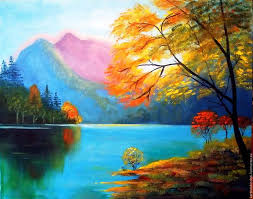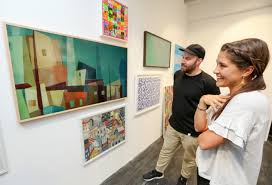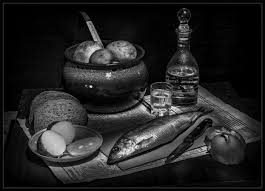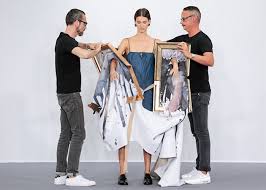combination
EXCURSION TO THE WORLD OF PAINTING (part 1)
 Painting, according to the apt remark of the artist K. Yuon, is “a living letter or a letter about the living”. At first glance, this may seem paradoxical: after all, living writing and writing about living things are not the same thing. But in this case, the paradox of this statement is only apparent. With the words “letter about the living,” the artist reveals the subject of painting, and “living writing” – its means. In painting, the shape of the object is conveyed, its color, the light illuminating it, the texture of the material, the space in which the depicted object is located. Therefore, painting uses such specific graphic means as a line, color, chiaroscuro, aerial and linear perspective, etc. These graphic means make it possible to create an illusion of three-dimensionality on a plane, to correctly convey the feeling of volumetric objects in the world around us, to preserve and multiply the multi-color nature and so on. Continue reading
Painting, according to the apt remark of the artist K. Yuon, is “a living letter or a letter about the living”. At first glance, this may seem paradoxical: after all, living writing and writing about living things are not the same thing. But in this case, the paradox of this statement is only apparent. With the words “letter about the living,” the artist reveals the subject of painting, and “living writing” – its means. In painting, the shape of the object is conveyed, its color, the light illuminating it, the texture of the material, the space in which the depicted object is located. Therefore, painting uses such specific graphic means as a line, color, chiaroscuro, aerial and linear perspective, etc. These graphic means make it possible to create an illusion of three-dimensionality on a plane, to correctly convey the feeling of volumetric objects in the world around us, to preserve and multiply the multi-color nature and so on. Continue reading
EXCURSION TO THE WORLD OF GRAPHICS
 Graphics is the art of drawing. A graphic image, as a rule, consists of lines, strokes, dots, etc. By its nature, a graphic image is more conventional than a pictorial one, although the graphic and expressive means of graphics are much the same as in painting. Unlike painting, the color in the graphic is predominantly one (usually black), but there is a graphic that also uses a different color. The graphic also uses stained drawing – a pictorial tool widely used, for example, in the graphic sheets of Mesereel and the Prophet.
Graphics is the art of drawing. A graphic image, as a rule, consists of lines, strokes, dots, etc. By its nature, a graphic image is more conventional than a pictorial one, although the graphic and expressive means of graphics are much the same as in painting. Unlike painting, the color in the graphic is predominantly one (usually black), but there is a graphic that also uses a different color. The graphic also uses stained drawing – a pictorial tool widely used, for example, in the graphic sheets of Mesereel and the Prophet.
Graphic artists can create not only separate sheets, but also entire series of drawings, united by a common theme. Without resorting to the help of color, graphics – art unusually laconic with its avaricious means can and does give pictures of life no less significant in terms of ideology and aesthetics than painting. Continue reading




